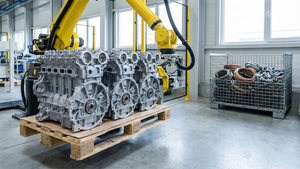 Photo from Unsplash
Photo from Unsplash
Originally Posted On: https://www.longviewlightingga.com/cost-for-electrical-services-during-a-kitchen-remodel/
Cost Considerations for New Electrical During a Kitchen Remodel
Kitchen remodels can transform your home, but they often come with unexpected costs. Electrical work is a crucial part of any kitchen update. It’s easy to overlook this expense when planning your budget.
Electrical upgrades can make up 10-15% of your total kitchen remodel costs. This includes new outlets, lighting, and wiring for appliances. You might need to update your electrical panel to handle the increased power demands of modern kitchens. Safety is a top reason to focus on electrical work during your remodel. Old wiring can be a fire hazard. New electrical systems can also add value to your home and make it more energy-efficient.
Understanding Kitchen Remodel Costs
Kitchen remodels can vary widely in cost. Your budget will depend on several key factors, including the size of your space and the materials you choose.
Factors Affecting Total Cost
The size of your kitchen plays a big role in the overall cost. Larger kitchens need more materials and take longer to remodel. The quality of materials you pick also impacts costs.
- High-end appliances and custom cabinets cost more than basic options.
- Labor costs are another major factor. Skilled workers like electricians and plumbers charge different rates.
- Complex jobs that need special permits or structural changes will increase your final cost.
- The scope of your project matters too. A simple update with new paint and hardware is cheaper than a full gut renovation.
Budgeting for Your Kitchen Size
Small kitchens (70-150 sq ft) typically cost $5,000 to $30,000 to remodel. Medium kitchens (150-175 sq ft) range from $15,000 to $40,000. Large kitchens (200+ sq ft) can cost $30,000 to $60,000 or more.
These ranges give you a rough idea of what to expect. Your actual costs may be higher or lower based on your choices and location. Remember to set aside 10-20% of your budget for unexpected issues. This helps you avoid going over budget if surprises come up during the remodel.
The Role of Quality and Materials
The materials you choose have a big impact on your total cost. Here’s a quick breakdown:
- Cabinets: 20-40% of budget
- Countertops: 10-20% of budget
- Appliances: 10-20% of budget
- Flooring: 5-10% of budget
Higher quality items cost more upfront but may last longer. This can save you money in the long run. Think about how long you plan to stay in your home when making these choices. Small details like hardware and kitchen lighting can add up quickly and affect your budget.
Electrical Work in Focus
Electrical upgrades play a big role in kitchen remodels. They affect safety, functionality, and energy use. Getting it right can make your new kitchen shine.
Assessing Electrical Requirements
- Your kitchen needs power for appliances, lights, and outlets. Count how many devices you’ll use. Think about where you’ll put them. You might need more circuits or a bigger electrical panel.
- Check if your wiring is old or outdated. Older homes often need updates to meet current codes. This keeps your kitchen safe and working well.
- Don’t forget about special needs. High-power appliances like ovens need their own circuits. Ask an electrician to look at your kitchen. They can tell you what changes you need.
Costs of Upgrading Electrical Systems
Electrical work can be a big part of your budget. Prices depend on what you need done. Here are some common costs:
- New outlets: $100-$250 each
- New circuit: $500-$1000
- Upgrading panel: $1000-$4000
- Rewiring kitchen: $2000-$6000
These are rough estimates. Your actual costs may be different. Get quotes from a few electricians to find the best price. Remember, good electrical work is worth the cost. It keeps your kitchen safe and working well for years to come.
Incorporating Energy Efficiency
- Energy-saving choices can cut your power bills. LED lights use less energy than old bulbs. They also last longer. You can put them under cabinets or in ceiling fixtures.
- Smart switches let you control lights with your phone. They can turn off lights you forgot about. This saves energy and money.
- Energy Star appliances use less power. They might cost more up front. But they save money over time. Look for this label when buying new kitchen gear.
- Consider adding USB outlets. They charge phones without bulky adapters. This cuts clutter and saves a bit of energy too.
Setting a Budget for Cabinets and Countertops
Cabinets and countertops are big parts of a kitchen remodel. They affect how your kitchen looks and works. Your choices will impact your budget a lot.
Choosing Materials
- For countertops, you have many options. Quartz is popular because it’s tough and looks nice. It costs about $50 to $200 per square foot. Granite is another good choice, ranging from $40 to $100 per square foot.
- Kitchen cabinets come in different materials too. Wood is common and can cost $80 to $400 per linear foot. Laminate is cheaper, from $50 to $200 per linear foot.
- Remember to factor in installation costs. This can add 50% to 70% to the price of materials.
Custom vs. Standard Cabinetry
- Custom cabinets are made just for your kitchen. They fit perfectly and you can pick any style you want. But they’re pricey, often $500 to $1,200 per linear foot.
- Standard cabinets are pre-made and less costly. They range from $100 to $300 per linear foot. You can find them at big box stores or cabinet shops.
- Semi-custom cabinets are a middle ground. They offer some customization but cost less than fully custom ones. Expect to pay $150 to $650 per linear foot.
- Don’t forget undermount lighting. The average cost of under-mount lighting for kitchen cabinets typically ranges from $100 to $300 per linear foot, depending on the type of lighting used (LED, fluorescent, etc.), the complexity of installation, and any additional features like dimmers or smart controls.
Appliances: Balancing Cost and Quality
Choosing the right kitchen appliances involves weighing costs against quality and features. Smart selections can enhance your cooking experience while staying within budget.
Prioritizing Appliance Selection
- Make a list of must-have appliances for your kitchen. Focus on items you’ll use often, like a refrigerator, stove, and dishwasher. Consider your cooking habits and family size when deciding on sizes and features.
- Look at mid-range options that offer good value. These often provide a mix of quality and affordability. Stainless steel finishes are popular and durable, but can increase costs.
- Compare prices from different retailers. You might find sales or package deals that save money. Don’t forget to factor in delivery and installation fees.
- Consider if you are making a change to the floorplan. Change to the floorplan could require moving or rewiring the electrical.
Energy Efficient Appliances
Choose appliances with ENERGY STAR labels. These use less electricity and can lower your utility bills. The initial cost might be higher, but you’ll save money over time. Look for water-saving dishwashers and efficient refrigerators. These features help cut both water and electric costs. Many new models have smart technology that further improves efficiency. Consider the long-term savings when picking between options. An energy-efficient model might cost more upfront but save you money each month. This can add up to significant savings over the appliance’s lifetime.
Additional Features and Their Impact
Adding special features to your kitchen can change electrical needs and costs. Smart tech and luxury items often require extra wiring and power.
Smart Home Technology
- Smart appliances and devices can make your kitchen more high-tech. You might want a smart fridge, oven, or lighting system. These need special wiring and sometimes their own circuits.
- Voice-controlled assistants like Alexa or Google Home need power outlets too. Smart switches and plugs may need new wiring behind walls. This can add to your electrical costs.
- A central hub to control all devices might need its own power source. Wi-Fi boosters ensure all smart items stay connected. Your electrician will need to plan for these extras.
Luxury Additions
Fancy kitchen features often need more power. A kitchen island with built-in appliances needs its own circuits. You might want a wine cooler or warming drawer. These need special electrical hookups.
High-end range hoods with powerful fans need dedicated circuits. Heated floors are cozy but use a lot of electricity. Multiple ovens or a professional-grade cooktop need robust power supplies. Your electrician may need to upgrade your electrical panel to handle the load. This can be a big expense but worth it for your dream kitchen.
Labor Costs: An Overview
Labor costs make up a big part of kitchen remodel expenses. Hiring pros can be pricey but saves time and stress. Careful planning helps you figure out what you’ll spend on workers.
Hiring Professionals vs. DIY
You have two main choices for your kitchen remodel: hire pros or do it yourself. Hiring pros costs more but gets the job done faster and better. A general contractor can manage the whole project for you. They handle permits, schedules, and workers. DIY can save money if you’re handy, but you should never DIY the electrical. You might make mistakes that cost extra to fix or even worse, cause a house fire. Some tasks need special skills or tools you may not have.
The Hidden Costs of Remodeling
Kitchen remodels often come with unexpected expenses beyond the initial budget. Being aware of these potential costs can help you plan better and avoid financial surprises during your project.
Permitting and Inspections
Inspections are also required at different stages of the remodel. You might need separate inspections for electrical, plumbing, and structural work. Each inspection can cost $100 to $300.
Don’t forget about time costs. Getting permits and scheduling inspections can add days or weeks to your project timeline. This might mean extra expenses if you’re paying for temporary living arrangements.
Unforeseen Expenses
Outdated wiring is a potential issue. Your electrical system might need upgrades to meet current codes. This can be a significant additional cost. The cost to rewire outdated wiring in a 3,000 sq ft home typically ranges from $8,000 to $15,000, depending on various factors.
Outdated wiring can pose several dangers, including:
- Fire Hazard: Old or frayed wires can overheat, leading to electrical fires.
- Short Circuits: Aging wiring may not handle modern electrical loads, increasing the risk of short circuits.
- Electrocution Risk: Damaged or improperly insulated wires can expose live electrical currents, posing a shock hazard.
- Incompatible with Modern Appliances: Outdated wiring may not support the power requirements of newer appliances, causing them to malfunction or become damaged.
- Insulation Deterioration: The insulation around older wires can degrade over time, leading to exposure and increased risks.
- Inconsistent Power Supply: Faulty wiring can cause flickering lights and unreliable power, which may damage electronics.
- Code Violations: Outdated wiring may not comply with current electrical codes, leading to safety issues and potential legal liabilities.
Impact of Kitchen Remodel on Home Value
A well-planned kitchen remodel can boost your home’s value and appeal to potential buyers. The right updates can offer a good return on investment and make your property stand out in the market.
ROI Considerations
Kitchen remodels often give you a solid return on investment (ROI). You can expect to recoup about 70-80% of your costs when you sell your home. High-end appliances, new countertops, and fresh cabinets tend to offer the best ROI. Updating old electrical systems also adds value. Be careful not to overspend. Very expensive remodels may not pay off as much. It’s smart to look at other homes in your area. Make sure your kitchen fits the neighborhood standard. This helps you avoid pricing your home out of the local market. Energy-efficient upgrades can boost your ROI too. New LED lighting and ENERGY STAR appliances save money on bills. These features appeal to buyers who want lower running costs.
Frequently Asked Questions
Kitchen remodels often involve electrical work, which can impact the overall budget. Common questions arise about costs, factors, and considerations for electrical services during renovations.
What is the average electrical labor cost for a kitchen remodel?
The average electrical labor cost for a kitchen remodel ranges from $2,000 to $5,000. This price can vary based on the scope of work and your location. Electricians typically charge between $50 and $100 per hour. The total cost depends on the time needed to complete the project.
What factors influence the electrical rewiring costs in a kitchen remodel project?
Several factors affect electrical rewiring costs in a kitchen remodel. The age of your home plays a big role. Older homes often need more extensive rewiring. The number of new outlets and fixtures you want to add also impacts the cost. More complex layouts or special wiring for high-end appliances can increase prices. Local building codes and permit requirements can influence costs too. Some areas have stricter rules that may require more work.
How does kitchen size impact the overall electrical service costs in a remodeling job?
Kitchen size directly affects electrical service costs. Larger kitchens need more wiring, outlets, and lighting fixtures. A bigger space might require additional circuits to handle the increased load. This means more materials and labor time, leading to higher costs. Smaller kitchens generally have lower electrical costs due to less wiring and fewer fixtures needed.
Can you break down the cost for electrical upgrades during a kitchen renovation?
- Electrical upgrades in a kitchen renovation include several components. New outlets typically cost $100 to $250 each to install. Lighting fixture installation ranges from $100 to $800 per fixture.
- Upgrading the electrical panel might cost $1,000 to $3,000.
- Adding new circuits for appliances can run $150 to $300 per circuit. GFCI protection in wet areas adds about $200 per outlet.
What are the key electrical expenses to account for when budgeting for a kitchen remodel?
When budgeting for kitchen electrical work, consider these key expenses:
- Rewiring costs
- New outlet installations
- Lighting fixture installations
- Electrical panel upgrades
- Appliance circuit installations
- GFCI protection in wet areas
Don’t forget to factor in permit fees and possible drywall repair costs after electrical work.
How will upgrading kitchen appliances affect the electrical installation costs?
Upgrading kitchen appliances can significantly impact electrical installation costs. New, high-powered appliances often require dedicated circuits. Adding these circuits involves running new wires and installing new breakers. This increases both material and labor costs. Some appliances, like electric ranges or cooktops, might need 240-volt power. This requires special wiring and can be more expensive to install.






